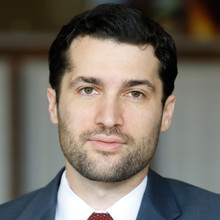Seditious Conspiracy: What to Make of the Latest Oath Keepers Indictment
The indictment sets out the most serious criminal charge yet used against any of the Capitol rioters, but it also shows the limits of the criminal law in responding to Jan. 6.

Published by The Lawfare Institute
in Cooperation With

In remarks last week, Attorney General Merrick Garland defended the Justice Department’s strategy for prosecuting participants in the Jan. 6 insurrection by noting the following:
We build investigations by laying a foundation. We resolve more straightforward cases first because they provide the evidentiary foundation for more complex cases. Investigating the more overt crimes generates linkages to less overt ones. Overt actors and the evidence they provide can lead us to others who may also have been involved. And that evidence can serve as the foundation for further investigative leads and techniques.
Now this deliberate approach may finally be bearing some fruit. Yesterday, Jan. 13, the Justice Department unsealed the indictment of Stewart Rhodes—the founder and leader of the right-wing Oath Keepers militia—and several of his deputies for playing central roles in orchestrating the assault on the U.S. Capitol.
In particular, the indictment sets out the most serious criminal charge yet used against any of the Capitol rioters: seditious conspiracy. Although the maximum penalty for seditious conspiracy, 20 years’ imprisonment, is less than that for many other federal crimes, seditious conspiracy remains an exceptionally serious, and rarely prosecuted, criminal offense because of its expressive effect. To label something sedition goes beyond normal criminality, suggesting that the conduct strikes at the heart of American democracy and falls within the same conceptual category as the most serious political crimes, such as rebellion, insurrection and treason. Thus, those wishing to see greater accountability for the events of Jan. 6 are likely to be heartened by this latest filing, as the Justice Department lays out a strong factual case that will bring serious legal penalties and hopefully a greater public recognition that the events of Jan. 6 were one of the most serious attacks on democracy in American history.
But the indictment also shows the limits of the criminal law in responding to Jan. 6. To limit inevitable legal challenges, the Justice Department has centered its case on the sorts of violent acts that are among the least controversial applications of the seditious conspiracy statute and related criminal provisions. And while this constrained model of a conspiracy may well maximize the chances of holding Rhodes and other similarly situated defendants accountable, it most likely excludes those political leaders who drove the events of Jan. 6—including the man who many believe bears the greatest responsibility, former President Donald Trump.
According to the indictment, Rhodes began to plan for a rebellion just two days after the 2020 presidential election, when he told Oath Keepers members to reject Biden’s victory. “We aren’t getting through this without a civil war,” he said on an encrypted Signal chat. Over the following weeks, Rhodes called on other Oath Keepers in open letters and private chats to use violence to stop Biden from assuming office. In one instance, he said that if Biden were to assume the presidency, “We will have to do a bloody, massively bloody revolution against them.”
Beginning in December 2020, Rhodes and other Oath Keepers members made plans to travel to Washington, D.C., around Jan. 6, the date of the certification of the Electoral College vote. In preparation, prosecutors say, they recruited members to participate in their plan, held training sessions on paramilitary combat tactics, and transported weapons and tactical gear to the D.C. area. One Oath Keeper, Thomas Caldwell, claimed to have traveled to Washington, D.C., for a reconnaissance trip.
Prosecutors allege that on Jan. 6, Oath Keepers members positioned themselves around D.C.—several by the Capitol while others waited just outside the city in quick reactionary force teams. Some Oath Keepers at the Capitol split into two teams to form military-style “stacks” and breach the Capitol, forcing their way past law enforcement officers.
The Oath Keepers’ plot didn’t stop at the Capitol siege, according to the indictment. On the evening of Jan. 6, Rhodes and other members met to celebrate the attack and discuss their next steps. In the following week, members continued to communicate about their plans and Rhodes allegedly spent around $17,500 on weapons and ammunition. And prosecutors claim that, around Inauguration Day, Rhodes contacted other members to organize local militias to oppose the Biden administration.
On the basis of these allegations, all 11 of the defendants were charged not just with seditious conspiracy (18 U.S.C. § 2384) but also with conspiracy to obstruct an official proceeding (18 U.S.C. § 1512(k)), committing or aiding and abetting such obstruction (18 U.S.C. § 1512(c)), and conspiracy to prevent members of Congress from executing their official duties (18 U.S.C. § 372) for their efforts to disrupt the electoral vote count. Nine of the 11 were also charged with document tampering (18 U.S.C. § 1512(c)(1)) for destroying digital records off their cell phones and social media accounts relating to their involvement in the conspiracy, while five drew charges for “willfully injur[ing]” federal property (18 U.S.C. § 1361) for damaging the U.S. Capitol building. Two defendants—Jessica Watkins and Joshua James—also received additional civil disorder charges (18 U.S.C. § 231(a)(3)) for interfering with law enforcement officials’ performance of their official duties. And James was charged with assaulting and interfering (18 U.S.C. § 111(a)(1)) with a D.C. Metropolitan Police Department officer identified by the initials “J.M.”
Several of these charges had previously been brought against nine of the 11 defendants—everyone but Rhodes and co-defendant Edward Vallejo—in earlier indictments. Those indictments, which have been repeatedly superseded as new charges and defendants have been added, centered on a more conventional criminal conspiracy (18 U.S.C. § 371) to obstruct the electoral vote certification (18 U.S.C. § 1512(c)(2)) and did not include charges for seditious conspiracy, conspiracy to obstruct an official proceeding, or conspiracy to prevent members of Congress from executing their official duties. As the Justice Department explained in a related press release, it intends to continue to pursue these preexisting charges—which include charges for unlawfully entering restricted grounds (18 U.S.C. § 1752) that are not included in the United States v. Rhodes indictment—against the seven remaining defendants in that matter, for which it issued a new superseding indictment under the caption United States v. Crowl. Meanwhile, it will prosecute the other nine defendants now included in the Rhodes indictment separately alongside Rhodes and Vallejo. The department also unsealed a third separate indictment against Jonathan Walden, another member of the Oath Keepers included in earlier indictments, whom the Justice Department intends to prosecute separately on obstructing an official proceeding (18 U.S.C. § 1512(c)(2)) and unlawfully entering restricted grounds (18 U.S.C. § 1752) alone. Four other Oath Keepers charged in prior related indictments have since pleaded guilty and agreed to cooperate with law enforcement, and are not included in this revised trio of indictments.
The distinguishing factor between the Rhodes and Crowl defendants appears to be their respective roles within the Oath Keepers organization and related planning for Jan. 6. In the revised complaint, several of the defendants in Crowl are described as being relatively new “recruits” to the Oath Keepers, with some even submitting membership applications or inquiring as to the membership process in the course of preparing for the events of Jan. 6. Others are in clearly subsidiary roles, taking directions from other members and even going so far as to refer to them as “commander.” By contrast, all 11 of the defendants in Rhodes are alleged to have taken steps to recruit participants, secure training and equipment, conduct reconnaissance, and otherwise help plan for their activities on Jan. 6, including the attack on the Capitol. In many cases, they communicated through Signal channels expressly designated for Oath Keepers leadership and are alleged to have continued coordinating even after Jan. 6 by continuing to secure firearms and related equipment, coordinating their movements, consciously keeping a low profile, inquiring with Rhodes and others regarding “next steps,” and internally discussing “Civil War 2.0” following Biden’s inauguration. This evidence of shared intent and coordination is no doubt what led the Justice Department to bring the much more specific conspiracy charges, including seditious conspiracy, leveled in Rhodes, all of which carry criminal penalties well above the five years of imprisonment provided for by the conventional criminal conspiracy statute. By contrast, the revised indictment covering Walden drops even the criminal conspiracy charges that he’d previously faced.
As its name suggests, seditious conspiracy, the main charge, requires the government to establish both the existence of a conspiracy and that its aim was sedition. To satisfy the former, the standard elements of conspiracy apply: an agreement between multiple people to commit some unlawful act. In addition, while some jurisdictions require an overt act taken in furtherance of conspiracy, this is not a requirement for seditious conspiracy—though even if it were, the indictment alleges plenty of such acts.
What makes seditious conspiracy special—and a rarely invoked offense—is the sedition part. Specifically, under Section 2384, individuals have committed sedition when they “conspire to overthrow, put down, or to destroy by force the Government of the United States … or to oppose by force the authority thereof, or by force to prevent, hinder, or delay the execution of any law of the United States, or by force to seize, take, or possess any property of the United States contrary to the authority thereof.” While the facts alleged in the indictment could plausibly be characterized as opposing by force the authority of the U.S. government, the indictment alleges the broader formulation of sedition: the use of force to prevent, hinder or delay the execution of a law—specifically, the constitutional and statutory provisions surrounding the transfer of power after a presidential election.
Importantly, the alleged conduct at issue avoids the problem the government faced during the most recent seditious conspiracy prosecution: the failed attempt to prosecute members of the Christian military “Hutaree” group in Michigan, which sought to kill a police officer so as to provoke a “more wide-spread uprising against the Government.” In that case, the district court threw out the seditious conspiracy charge because, while the Hutarees were plotting to attack government officials, they were not planning to “forcibly resist a positive show of authority by the Federal Government.” By contrast, this indictment does not rely on the Oath Keepers’ plans to attack Congress per se but, rather, to act so as to disrupt the certification of the Electoral College vote. And given the successful seditious conspiracy prosecutions in 1950s of Puerto Rican national terrorists who stormed the Capitol and shot several congressmen in the name of Puerto Rican independence, it’s not clear that the narrow interpretation of seditious conspiracy used in the Hutaree case would even apply here.
Because the alleged conduct describes the core of what the seditious conspiracy statute was meant to outlaw—if attacking the seat of democratic government to prevent the peaceful transfer of power isn’t seditious conspiracy, what is?—the only plausible legal argument remaining for the defendants is a full-out attack on the statute itself. But facial attacks on Section 2384 have not been successful. For example, in upholding seditious conspiracy convictions arising out of the 1993 World Trade Center bombing, the U.S. Court of Appeals for the Second Circuit upheld the statute against a facial attack based on overbreadth and vagueness, holding that the statute’s force requirement was compatible with the First Amendment and its definition of sedition was sufficiently detailed. (And indeed, likely to avoid any First Amendment issues, the department seems to have erred on the side of caution here by declining to make other charges, like advocating for the overthrow of the government (18 U.S.C. 2385), that the indictment’s allegations of the Oath Keepers’ communications would arguably support.)
The defendants’ best argument against the seditious conspiracy charge may not be legal but prudential. Pre-World War II prosecutions for sedition have made for some of the worst chapters in American law enforcement, targeting political dissenters in ways that would be flatly unconstitutional under the current understanding of the First Amendment. And the statute’s breadth—although it requires the use of force, it is sufficient that force is used “to prevent, hinder, or delay the execution of any law of the United States” (emphasis added)—makes it easy to abuse even today. For example, in September 2020, the Department of Justice advised prosecutors to consider seditious conspiracy charges against protesters who committed violence against federal buildings and property in connection with the wide-scale protests against police violence in the wake of George Floyd’s murder. Do we really want the government to be able to brand racial-justice protests—even violent ones that might otherwise be criminal—as “sedition”? The concern with a broad seditious conspiracy statute is especially acute given that federal law already criminalizes “rebellion or insurrection against the authority of the United States or the laws thereof,” a provision that might be seen as more naturally encompassing the Oath Keepers’ actions without the breadth of seditious conspiracy.
But these concerns, although certainly legitimate, are unlikely to help the Oath Keepers. Seditious conspiracy is hardly unique when it comes to broad federal criminal laws. Courts routinely rely on prosecutorial discretion to enforce broad criminal statutes responsibly. Nor do judges like to micromanage charging decisions, especially where, as here, the seditious conspiracy statute has the advantage of being used more recently than the archaic rebellion statute. Perhaps it would be better if Congress revamped Chapter 115 of Title 18—“treason, sedition, and subversive activities”—so as to provide a set of narrow, clearly defined offenses with which to deal with attacks on democracy. But until they do that, there is no obvious legal bar to the sorts of prosecutions that this indictment involves.
There’s something else missing from the indictment as well: any indication of involvement in the alleged conspiracy by political leaders outside the Oath Keepers. As described by the Justice Department, there’s no hint that the group’s plans for violence extended beyond the circle of the Oath Keepers themselves to include Trump, his associates or any of the members of Congress who voiced support for efforts to “stop the steal.” That’s particularly notable given accusations by some lawmakers that their colleagues played a role in planning the attack. Absent as well is Trump associate Roger Stone, who was guarded by Oath Keepers on Jan. 6 before the attack on the Capitol began.
Nor do these political leaders seem to fit within the vision of the seditious conspiracy laid out by the Justice Department. The case against Rhodes and his co-defendants focuses narrowly on those directly involved in the Oath Keepers’ effort to plan for and facilitate acts of violence on Jan. 6—to the point that it even excludes other Oath Keepers who participated in those events but do not appear to have had a role in planning them. (The latter are instead being charged as part of a non-seditious criminal conspiracy, which carries a lighter criminal penalty.) And there are few signs that any political leaders were involved in such planning to the same degree or in the same way as the Oath Keepers being prosecuted alongside Rhodes.
When it comes to Trump, in fact, the indictment includes a message from Rhodes that actually seems to cut against any potential entanglement by the former president in the conspiracy. At 1:30 p.m. on Jan. 6, just after rioters began storming the Capitol, Rhodes texted on Signal, “All I see Trump doing is complaining. I see no intent by him to do anything. So the patriots are taking it into their own hands. They’ve had enough.” This certainly doesn’t sound like a message from someone who had been plotting with Trump or was waiting for his signal to start smashing windows.
So however significant this indictment is, it’s not a sign that the D.C. grand jury is about to unveil charges of seditious conspiracy against the former president—at least not on these facts. Does this mean that accountability for Jan. 6 in criminal court will go only as far as Stewart Rhodes? Not necessarily—as Garland noted in his speech, investigations progress gradually. And the criminal cases brought thus far in the sprawling web of Jan. 6 prosecutions also describe how the Proud Boys engaged in their own efforts, separate from the Oath Keepers, to plan the Capitol attack and rile up the crowd. It’s possible to sketch out what a similar seditious conspiracy indictment might look like against the Proud Boys, which have also been linked to Stone—and perhaps, through Stone, to the White House. But while the Oath Keepers indictment doesn’t rule that out, it doesn’t promise it, either.









